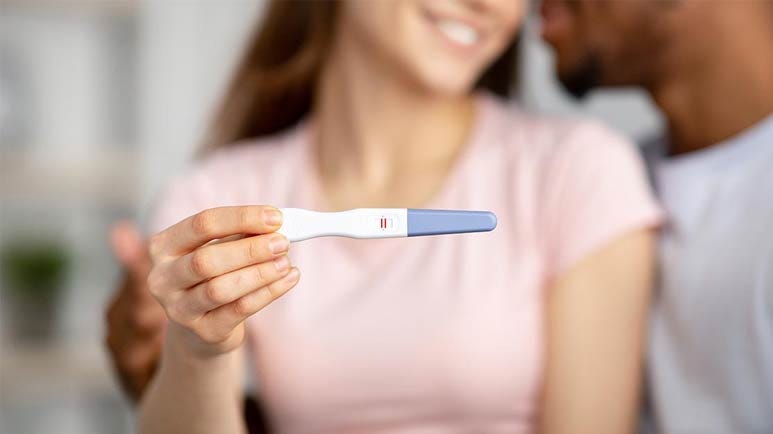Is Paternal Age an Issue in Reproductive Planning?
Description
STORY AT-A-GLANCE
In the U.S., the average age for first-time fathers has climbed to about 31, and men aged 50 and older now make up 1.3% of all fathers, signaling a shift toward later fatherhood
A 2025 Nature study found that sperm accumulate genetic mutations with age, including “selfish” mutations that expand within the testes and increase risks of neurodevelopmental and childhood disorders
A companion analysis of over 54,000 families confirmed these mutations are passed to children. This shows that paternal age directly shapes genetic inheritance through natural selection within sperm-producing cell
Modern factors like endocrine disruptors, microplastics, obesity, stress, alcohol, smoking, and EMF exposure are accelerating sperm decline across all ages and contributing to the global drop in sperm counts
Simple, preventive actions, including maintaining a healthy weight, minimizing toxins, managing stress, and considering early sperm screening or preservation, can help protect fertility

More men are becoming fathers later in life than ever before. In the U.S., the average age for first-time fathers has climbed to about 31,1 and men aged 50 and older now make up 1.3% of all fathers — a small but clear increase from 1.1% just a decade ago.2 Careers, financial stability, evolving relationships, and personal readiness all play a part in why many people are choosing to delay parenthood.
For years, the “biological clock” has been framed almost exclusively as a woman’s issue, compromising egg quality, raising chromosomal risks, and narrowing the window for conception. Men, on the other hand, were viewed as fertile for life simply because sperm production never stops. Yet research increasingly shows that a man’s reproductive system changes with age as well, in ways that science is only beginning to understand better.
New Study Maps the Genetic Toll of Aging Sperm
In October 2025, researchers from the Wellcome Sanger Institute and King’s College London published a landmark study in Nature that traced how harmful genetic mutations accumulate in sperm as men age. Conducted in collaboration with the TwinsUK study — the largest adult twin registry in the U.K. — the research aimed to determine how a man’s age shapes the genetic material he passes on to his children.3
Sequencing revealed how mutations build and spread with age — The team analyzed sperm samples from 81 healthy men aged 24 to 75, using high-precision DNA sequencing to track how tiny genetic changes accumulate over time. The results showed that sperm mutations do not simply result from age-related wear and tear. Instead, certain mutations are favored during sperm production, giving some sperm-producing cells a biological edge over others.
“Selfish” sperm cells dominate over time — These advantaged cells divide faster and outcompete neighboring ones, passing their mutations to a larger share of sperm. Over decades, this creates a quiet evolutionary process that reshapes the genetic landscape of the testes, favoring mutations that replicate efficiently, even when they increase disease risk for the next generation.
Researchers identified 40 genes where these mutations tend to occur — Many of these genes are tied to neurodevelopmental and childhood disorders such as autism, epilepsy, and congenital heart disease, as well as certain cancers. While 13 of these genes were previously known, the study showed that the phenomenon is far more widespread, affecting genes vital for cell growth and development.
Harmful DNA changes not only persist but also multiply with age — Sperm from men in their early 30s carried disease-causing mutations in about 2% of cases, while men aged 43 to 74 showed rates of 3% to 5%. By age 70, roughly 4.5% of sperm contained damaging mutations. Not every mutation leads to conception; some prevent fertilization, hinder embryo development, or cause miscarriage. Still, the trend reveals a measurable increase in genetic risk as paternal age rises.
These findings redefine how we view the male germline — The germline is the lineage of cells that produces sperm and carries genetic information to future generations. The study demonstrated that natural selection acts at the cellular level within the testes, an organ once considered genetically stable. According to Dr. Raheleh Rahbari, senior author and group leader at the Wellcome Sanger Institute:
“There’s a common assumption that because the germline has a low mutation rate, it is well protected. But in reality, the male germline is a dynamic environment where natural selection can favor harmful mutations, sometimes with consequences for the next generation.”4
Findings confirmed across large-scale genetic data — In a complementary Nature study,5 scientists from Harvard Medical School and the Sanger Institute analyzed over 54,000 parent-child trios and 800,000 healthy individuals.
<label class="hide-text" contenteditable="false">Text within this block will maintain its original spacing when published</label>They found similar signs of positive selection in more than 30 genes, confirming that the same mutations expanding within the testes are being transmitted to offspring. This cross-validation between sperm- and family-based data represents a major step forward in understanding how paternal age shapes genetic inheritance.
Taken together, these studies show that while men remain capable of fatherhood later in life, age brings measurable biological changes that affect both fertility and the health of future children. Recognizing how these changes occur gives you the awareness to plan ahead and make choices that support long-term reproductive health.
Earlier Evidence on Age-Related Mutations of the Male Germline
Before the 2025 Nature report, scientists had already begun mapping the genetic fingerprints of aging in the male reproductive system. For instance, in 2022, a comprehensive review published in Fertility and Sterility compiled decades of research showing how sperm changes with advancing age, both in its physical characteristics and its genetic integrity.6
Age alters sperm structure and function — The review summarized consistent declines in sperm count, motility, and normal shape (morphology) with age. Beyond these visible changes, the most significant f






